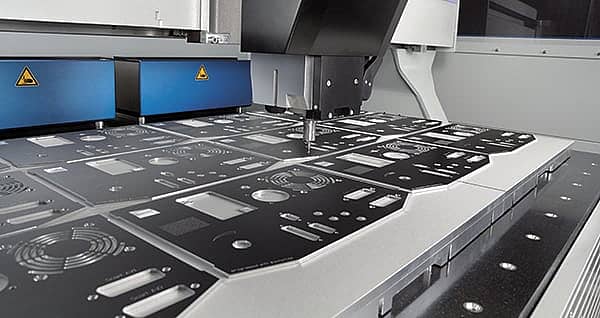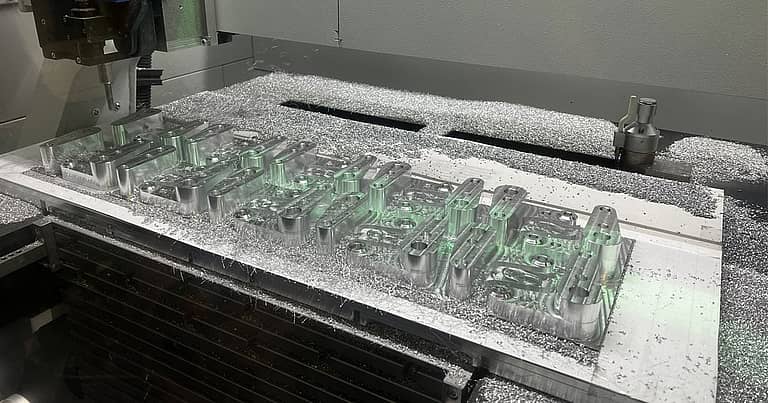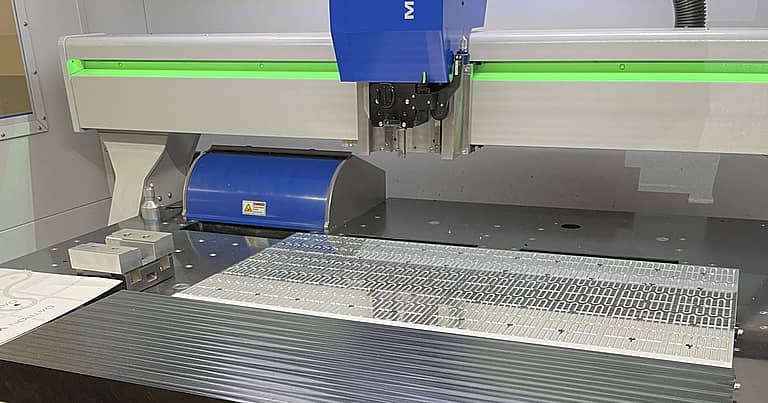
CNC (or Computer Numerical Control) milling is a process that allows users to remove excess material from a raw material (such as metal or plastic) via a cutting tool attached to a rotating spindle. This process is very versatile because after you mount the material to the table, you can rotate and otherwise move the table to cut along many different angles. As a general rule, the more axes the milling machine can handle, the more complex shapes can be created.
The computerized aspect of this process allows users to program the machine to make the exact cuts that are needed. This process enables users to get the exact shapes they may need for specific needs and the computer-controlled process is both fast and flawless.
Now that you know a bit more about what CNC machining is, let’s take a closer look at the process and what it can do for your unique manufacturing needs.
What Is Computer Numerical Control?
Those who are new to this process begin by asking very fundamental questions, including “What is CNC manufacturing?” and “What is CNC fabrication?” Once you get answers to those questions and have a good handle on the CNC machining definition, though, you may be left with a more fundamental question: what is Computer Numerical Control?
In short, CNC refers to the use of preprogrammed instructions that (thanks to the DATRON next Control Software inside the machinery) tell the tools exactly what to do. This is actually why many employers enjoy the CNC machining process: given the right instructions, the machine will create the exact shapes you need for your current project.
What Types of Machines Can Be Used for CNC Machining?
While there are many types of machines that can be used for CNC machining, the most commonly used machines generally fall into three distinct categories. Those categories are vertical milling machines, horizontal milling machines, and lathes.
As the name implies, a vertical milling machine is one where the cutting tool rotates vertically to facilitate your cutting needs. Most of these machines move on at least three axes, allowing the table to move from side to side and front to back.
A horizontal milling machine has a similar design, but the cutting tool rotates horizontally rather than vertically. Some of the more advanced horizontal milling machines have a tombstone work holding that can rotate, making them simultaneously more expensive and better suited for more extensive machining needs.
Finally, a lathe is designed to use a single-point cutting tool in order to remove excess material from the piece you are working on. Different types of lathes (including engine lathes and turret lathes) are available for very specific machining needs.
While other types of milling machines are available, understanding these three types of devices can help you get started with CNC machining.
The CNC Process
Why Would Someone Choose CNC vs. Other Methods?
As impressive as CNC machining is, it’s an open secret that other methods are available to you. This includes methods such as laser-cutting, rapid casting, and even manual machining. With that in mind, why should you consider choosing CNC over other methods?
The primary advantage is accuracy. Thanks to the computerized aspect of this process, you can remove human error from the equation and ensure consistent and accurate results. Accordingly, CNC machining also provides a speedy and efficient method to meet all of your production needs, and the technology is very adaptable as your needs scale up or down thanks to high-speed machining.
More recently, individuals and organizations have begun experimenting with 3D printing for their manufacturing needs. However, CNC machining has some very specific advantages over 3D printing: specifically, machining allows for greater flexibility with the materials used. When prototyping, reworking an existing part is also easier on a CNC machine because in a 3d printer the whole part would need to be reprinted. These technologies work well together but do not replace each other. 3d printers are great for creating your first model for an idea. CNC machining will allow for the prototype to be made out of the final material requirement and to exact tolerances.
What Materials Can Be Milled?
One of the most common misconceptions about the CNC process is that it is limited to only a handful of metals (mostly aluminum). However, you should be aware that not only can the CNC machining process be used on a wide array of metals, but it can also utilize other materials.
For example, CNC is great for aluminum. But the process also works very well with other metals, including stainless steel, copper, and even titanium. The right machines can also handle alloy steel, brass, and carbon steel. In fact, you may be surprised to discover that you can use CNC machining on workpieces made of plastic and even graphite.
Time to Discover What CNC Machining Can Do for You
Now you know more about CNC milling and machining, and it’s very easy to get started with the right gear. For example, DATRON’s neo is a great device to help you get started, no matter the size of your workspace. By the time you’re ready to go “all-in” on machining, DATRON’s M10 Pro has you covered.
If you’re still on the fence, it’s time for you to see our machines in action. After that, we think you’ll be ready to get started. And once you’re ready, we’ll be here waiting for you to simply contact us today!







